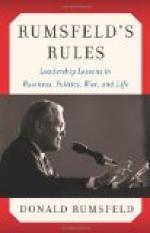A WEEK’S CAMPAIGN
October 25th, 1899
The Boer Commander-in-Chief has beyond doubt grasped the situation. His total force seems to be larger than was usually expected and to exceed my own rough estimate of thirty-five thousand men, the balance to his advantage being due probably to the British efforts to keep the Basutos from attacking the Free State. Thus the Boers have been able to overrun their western and southern borders in force sufficient to make a pretence of occupying a large extent of territory in which only the important posts specially prepared by the British for defence continue to hold out. Of these posts, however, Mafeking and Kimberley are as yet the only ones that have been attacked or threatened.
For operations in the northern corner of Natal the Boer commander was able to collect some thirty thousand men, who on the eve of hostilities were posted in separate columns upon the various routes leading from the Free State and from the Transvaal into the triangle of northern Natal. This triangle is like a letter A, the cross-stroke being the range of hills known as the Biggarsberg, which is intersected near the centre on a north and south line by the head-stream of the Waschbank River forming a pass through which run the railway and the Dundee-Ladysmith road. North of the Biggarsberg the gates of the frontier are Muller’s Pass, Botha’s Pass, the Charlestown road, Wool’s Drift, and De Jager’s Drift, of which Landman’s Drift is a wicket-gate. At each of these points, except perhaps Muller’s Drift, of which I have seen no specific mention, the Boers had a column waiting. South of the Biggarsberg are on the east Rorke’s Drift, and on the west the passes of Ollivier’s Hoek, Bezuidenhout, Tintwa, Van Reenen, De Beers, Bramkock, and Collins. At all these points there were Boer gatherings, though on the west the Free Staters, having their headquarters at Albertina, were likely to put their main column on the road leading through Van Reenen’s Pass to Ladysmith.
By Thursday morning the Boer advance had developed. The columns from Botha’s Pass, Charlestown, and Wool’s Drift had advanced through Newcastle, where they had converged, and moved south along the main road. The Landman’s Drift column had moved towards Dundee, the Rorke’s Drift column had pushed some distance towards the west, and the forces from Albertina had showed the heads of their columns on the Natal side of the passes.
The British force was divided between Dundee and Ladysmith. The Biggarsberg range, the cross-line of the A, is about fifty miles long. It is traversed from north to south by three passes. In the centre runs the railway through a defile. Twelve miles to the west of the railway runs the direct Newcastle-Ladysmith road; eight miles to the east runs the road Newcastle-Dannhauser-Dundee-Helpmakaar. A third road runs from De Jager’s Drift through




